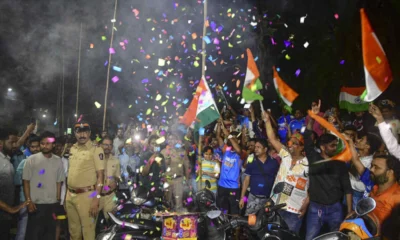India News
India should not use trespass as policy tool to achieve political targets: China

India News
Op Aaghat 3.0: Delhi police arrest over 280 accused ahead of New Year celebrations
Delhi police arrested over 280 accused and detained more than 1,300 individuals under Operation Aaghat 3.0 ahead of New Year, seizing weapons, drugs, liquor and stolen items.
India News
Over 2,000 Maoists surrender under Chhattisgarh rehabilitation policy, says CM Vishnu Deo Sai
Chhattisgarh Chief Minister Vishnu Deo Sai said more than 2,000 Maoists have surrendered under the state’s rehabilitation policy, which offers skill training, financial assistance and land support.
India News
Bangladeshi singer James’ concert cancelled after mob attack in Faridpur
A live concert by Bangladeshi singer James was cancelled in Faridpur after a mob allegedly attacked the venue with bricks and stones, raising concerns over safety of artists.
-

 India News22 hours ago
India News22 hours agoBJP gets its first mayor in Kerala as VV Rajesh takes charge in Thiruvananthapuram
-

 India News23 hours ago
India News23 hours agoVeer Bal Diwas reflects courage, conviction and righteousness, Says PM Modi
-

 India News20 hours ago
India News20 hours agoAAP targets Delhi LG with Ghajini dig over pollution row, BJP hits back
-

 Entertainment19 hours ago
Entertainment19 hours agoDhurandhar box office collection crosses Rs 1,000 crore worldwide in 21 days
-

 Latest world news18 hours ago
Latest world news18 hours agoIndia flags attacks on Hindus in Bangladesh as worrisome after recent lynchings
-

 India News20 hours ago
India News20 hours agoTraffic slows in Himachal Pradesh as year-end tourist rush chokes roads to Shimla, Manali
-

 India News2 hours ago
India News2 hours agoCBI moves Supreme Court against suspension of Kuldeep Sengar’s life sentence in Unnao rape case
-

 India News1 hour ago
India News1 hour agoBangladeshi singer James’ concert cancelled after mob attack in Faridpur


















